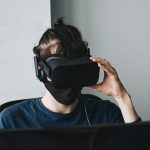Did you know that visual learners make up approximately 65% of the population?
According to 3M Corporation, the brain processes visual information 60,000 times faster than text. In addition, other research has found that using visual stimulus improves learning by 400 per cent. In this fast paced business world, where there is a constant roll over of new hires and plans for market expansion, setting time and resources aside for training can be a strenuous task. Let alone, ensuring that the training provided, makes use of learning styles that will instantly capture the attention of visual learners.
So, just how do businesses insure their visual learners undergo fast training that actually sticks?
Studies have found uni-sensory visual stimuli alone isn’t the most productive way to achieve exceptional results. In fact one study compared uni-sensory visual training with multi-sensory training to compare the difference. Whilst uni-sensory visual training was recognised as an effective measure of training, it was found that uni-sensory training is most successful if it involves repeated sessions in order to practice a new concept before feeling familiar and comfortable to adapt it in practice. Multi-sensory training, on the other hand, is said to alleviate time spent on training as it involves using more than one of the five senses. A study found that multi-sensory training provides the highest level of simulation at a reduced length of time, meaning it is guaranteed to prompt learning at a faster rate. It is even considered the most effective training method for the acquisition of new skills, particularly for people who are new to a company or have never worked in a particular industry. This is partially due to the fact that when visual stimuli is accompanied by sound, the learning potential is enhanced.
The Unmatched Potential of VR Training for Visual Learners
Thanks to XR technologies, AR and VR, employees are able to complete multisensory and highly immersive training regardless of space or location. In a 2018 TED talk about VR, entrepreneur Thong Nguyen, made a valid point that adapting to new technologies will accelerate and broaden our present learning capacity. He states “Over the next five years we are going to have to open up our thinking in completely new ways in order to use these new capabilities and move humanity forward.” VR uses headsets, as opposed to traditional desktop displays, allowing visual learners the opportunity to digest visual information along with audio and other sensory modalities. For this reason VR can be classified as a multisensory technology. The motor cortex part of our brain is activated during immersions, causing users to respond to sensations with focus and the embodiment of being somewhere else. Simulations during VR training are capable of tricking our brain to believe that what we are seeing in the virtual landscape is real and actually happening to us.
VR is becoming more commonplace in workplace training as it streamlines the entire process, which is crucial in the longevity of a company. It goes beyond viewing the visual stimulus we are used to, as VR involves the interplay of telepresence, interactivity and presence. Users are often able to indicate both psychological and emotional reactions during simulations. The benefits of these responses is that training induces a level of empathy and understanding that cannot be contrived from face-to-face interactions. As well as empathy, VR training places an emphasis on employee performance with lifelike assessments and walk-through scenarios that act as a guide for the employee to make fast and optimal perceptual decisions on the job. For example, employees working for a retail company, can undergo VR training to infuse them with confidence when engaging with customers, as learning modules provides strategies on how to de-escalate disputes.
VR training can even ease the stress of learning important information on a company’s safety compliance and legality measures as studies show this style training ensures faster knowledge retention. It shifts the focus to the expertise of every employee, so that should an unexpected emergency happen, there is always someone there to fix the problem.
As VR training incorporates multi-sensory facets, it is highly likely visual learners will be able to quickly and effectively gather a wealth of insight imperative to their job, as well as gain a deep understanding into the importance of empathy, safety and data to achieve improved outcomes. Thus, now more than ever, is the right time for effective HR teams and CEO’s to embrace Virtual Reality as a viable training solution for their visual learners.
Written by Lauren Tizzone
Similar articles to check out:







